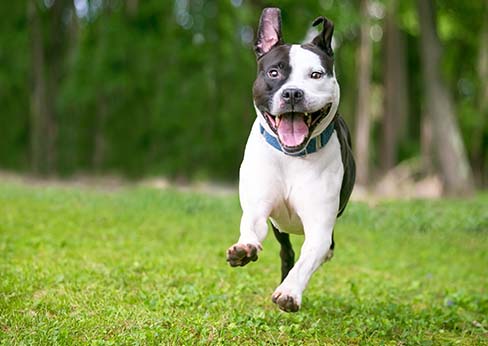Playing games with our dogs can lift our spirits, give our mood a much-needed boost, or even bring a smile to our face on the worst of days. But there is nothing worse than accidentally teaching your dog a bad habit during your playtime.
ALWAYS supervise children playing with dogs. Accidents happen. Your dog could easily bite too hard and hurt your child. Your child might not be able to read your dog and know when the dog has reached a level of arousal that is not appropriate.
Should you play chase with your dog?
A lot of people believe that chasing your dog will cause the dog to misbehave and run away from you. They are not wrong. You should never chase a dog if you are not intending it to be a game.
For example, if your dog has a sock and is running around the yard, this is not the time to chase him. If you do, you will teach him that “hey when I steal things from my owners, they run around playing with me!” The same goes for when you are calling your dog. If you keep calling your dog and he is not coming to you, you should never go after them. This can teach them that to have fun, you have to ignore what your owner says and just run around.
Dogs learn through association. This happens first and then this happens right after. From the examples above your dog is learning:
- Steal socks and a fun game starts OR Steal socks and no one pays any attention to me OR It is best to give the sock back so then I can get attention
- Run around so my owner can chase me when I hear “Come” OR When I hear come and I go to my owner, good things happen
You are always in control of what you are teaching your dog.
Chase Rules
Playing catch with your dog or puppy can be a lot of fun! Truffle loves it when I chase him around the house or when he chases me – but you have to follow some basic rules:
- Never chase a dog outside of playtime. You don’t want to teach your dog to run away when they are”in trouble” or when you really need them to come to you.
- Put chase on cue: A cue is a verbal signal to your dog that lets them know that you are about to play. I usually use “I am going to get you” or “Get me!” and then start chasing or running away.
- Have control over the game: As with all games, you need to stop the game if the dog gets over-aroused or aggressive. Or anytime you or your dog are no longer having fun.
- Stopping the game is very important: When you are done chasing your dog and you need him to be able to obey your commands, you need to provide a way for the dog to know “We are done now and need to get serious.” To do this, simply say “All Done” and walk away. That’s it. Do not let the dog keep running around and chase him. Become boring until the dog comes to you.
- Never leave children unattended: Children have a harder time knowing when the dog has had enough. You need to be there to make sure neither the dog nor your child is taking the game too far.
- Do not allow nipping/mouthing during chase: This is especially hard for herding breeds like cattle dogs. This is important because fast-paced, over-stimulating environments leave room for someone to get hurt. If your dog is nipping, stop the game immediately and act boring.
Final thoughts:
Dogs love to play chase! Truffle lives for it. So to make sure you differentiate between times when you want to chase your dog and when you do not, is to be consistent with your dog. Make sure that you are only chasing your dog when you initiate it through a game. Using a cue like “I’m coming to get you” can teach your dog that this means I am allowed to run away from my owner.





